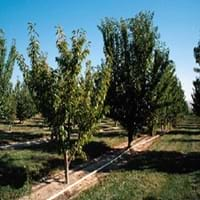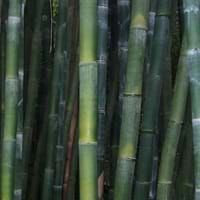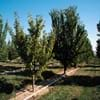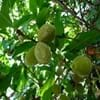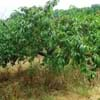Life Span
Perennial
Perennial
Origin
Hybrid origin, Western Asia
China
Types
Sweet cherry, Black cherry, Virginia bird cherry
Greenstripe Vivax, Moso, Weavers Bamboo, Oldhamii
Number of Varieties
Not Available
Habitat
Terrestrial
Subtropical climates, Wet Woods
USDA Hardiness Zone
5-8
8-11
AHS Heat Zone
10-1
12 - 8
Sunset Zone
4, 5, 6, 7, 15, 16, 17
H1, H2, 8, 9, 14, 15, 16, 17, 18, 19, 20, 21, 22, 23, 24
Habit
Upright/Erect
Upright/Erect
Flower Color
Not Available
Not Available
Flower Color Modifier
Bicolor
Bicolor
Fruit Color
Not Available
Not Available
Leaf Color in Spring
Not Available
Dark Green
Leaf Color in Summer
Not Available
Light Green
Leaf Color in Fall
Not Available
Dark Green
Leaf Color in Winter
Light Green
Dark Green
Leaf Shape
Oblong
Acicular
Plant Season
Spring, Summer, Fall
Spring, Summer, Fall, Winter
Sunlight
Full Sun, Partial Sun
Full Sun, Partial Sun
Type of Soil
Clay, Loam, Sand
Clay, Loam, Sand
The pH of Soil
Acidic, Neutral
Acidic, Neutral, Alkaline
Soil Drainage
Average
Average
Bloom Time
Spring
Not Available
Tolerances
Drought
Drought
Where to Plant?
Ground
Container, Ground
How to Plant?
Budding, Grafting
Grafting, Seedlings, Stem Planting, Transplanting
Plant Maintenance
Medium
Medium
Watering Requirements
Average Water Needs
Needs watering once a week, Use Mulches to help prevent water loss during hot and windy weather, Water Deeply
In Summer
Lots of watering
Lots of watering
In Spring
Moderate
Moderate
In Winter
Average Water
Average Water
Soil pH
Acidic, Neutral
Acidic, Neutral, Alkaline
Soil Type
Clay, Loam, Sand
Clay, Loam, Sand
Soil Drainage Capacity
Average
Average
Sun Exposure
Full Sun, Partial Sun
Full Sun, Partial Sun
Pruning
Prune in winter, Remove branches that rub together, Remove damaged leaves, Remove dead branches, Remove dead leaves, Remove dead or diseased plant parts
Do not prune during shooting season, Prune in late summer or fall, Remove damaged leaves
Fertilizers
All-Purpose Liquid Fertilizer, Fertilize in early spring
All-Purpose Liquid Fertilizer
Pests and Diseases
Red blotch
Black sooty mold, Mealybugs, Mosaic viruses, Powdery mildew, pythogens, Stem rot
Plant Tolerance
Drought
Drought
Flower Petal Number
Not Available
Single
Foliage Texture
Not Available
Coarse
Foliage Sheen
Not Available
Matte
Attracts
Aphids, Birds, Woodpeckers
Deers, Rabbits, Rats, Squirrels
Allergy
Not Available
allergic conjunctivitis, Asthma, Inflammation, Throat itching
Aesthetic Uses
Not Used For Aesthetic Purpose
Showy Purposes
Beauty Benefits
Anti-ageing, Good for skin and hair, Promotes healthy skin, Skin cleanser
Not Available
Environmental Uses
Air purification, Food for birds, Food for insects, Nesting sites for birds, Shadow Tree, Windbreak
Agroforestry, Air purification, No fertilizer, pesticides, or herbicides needed
Medicinal Uses
Anemia, anti-cancer, Arthritis, Cardiovascular problems, Migraines, Muscle Pain, Weight loss
Clears heat, Cold, fidgeting, Treating fever, Urinary tract problems
Part of Plant Used
Fruits
Leaves, Stem
Other Uses
Food for animals, Food for insects, Used for its medicinal properties
Application in Handicrafts, Showy Purposes, Used As Food, Used in Furniture, Used in paper industry
Used As Indoor Plant
No
No
Used As Outdoor Plant
Yes
Yes
Garden Design
Edible, Fruit / Fruit Tree, Shade Trees, Topiary / Bonsai / Espalier
Feature Plant, Screening / Wind Break, Tropical
Botanical Name
PRUNUS avium 'Bing'
BAMBUSA oldhamii
Common Name
Bing Cherry, Sweet Cherry
Clumping Bamboo, Giant Timber Bamboo, Oldham's Bamboo
In Hindi
Bing Cherry Tree
Bānsa
In German
Bing Kirschbaum
Bambus
In French
Bing Cherry Tree
Bambou
In Spanish
Bing Cherry Tree
Bambú
In Greek
Bing Cherry Tree
μπαμπού
In Portuguese
Cherry Tree Bing
bambu
In Polish
Bing Cherry Tree
Bambus
In Latin
Bing Cherry ligno
Bamboo
Phylum
Magnoliophyta
Magnoliophyta
Class
Magnoliopsida
Liliopsida
Clade
Angiosperms, Eudicots, Rosids
Not Available
Tribe
Not Available
Bambuseae
Subfamily
Not Available
Not Available
Number of Species
Not Available
Not Available
Season and Care of Bing Cherry and Giant Timber Bamboo
Season and care of Bing Cherry and Giant Timber Bamboo is important to know. While considering everything about Bing Cherry and Giant Timber Bamboo Care, growing season is an essential factor. Bing Cherry season is Spring, Summer and Fall and Giant Timber Bamboo season is Spring, Summer and Fall. The type of soil for Bing Cherry is Clay, Loam, Sand and for Giant Timber Bamboo is Clay, Loam, Sand while the PH of soil for Bing Cherry is Acidic, Neutral and for Giant Timber Bamboo is Acidic, Neutral, Alkaline.
Bing Cherry and Giant Timber Bamboo Physical Information
Bing Cherry and Giant Timber Bamboo physical information is very important for comparison. Bing Cherry height is 3,200.00 cm and width 150.00 cm whereas Giant Timber Bamboo height is 1,000.00 cm and width 10.00 cm. The color specification of Bing Cherry and Giant Timber Bamboo are as follows:
Bing Cherry flower color: Not Available
Bing Cherry leaf color: Not Available
Giant Timber Bamboo flower color: Not Available
- Giant Timber Bamboo leaf color: Dark Green
Care of Bing Cherry and Giant Timber Bamboo
Care of Bing Cherry and Giant Timber Bamboo include pruning, fertilizers, watering etc. Bing Cherry pruning is done Prune in winter, Remove branches that rub together, Remove damaged leaves, Remove dead branches, Remove dead leaves and Remove dead or diseased plant parts and Giant Timber Bamboo pruning is done Do not prune during shooting season, Prune in late summer or fall and Remove damaged leaves. In summer Bing Cherry needs Lots of watering and in winter, it needs Average Water. Whereas, in summer Giant Timber Bamboo needs Lots of watering and in winter, it needs Average Water.
